Macroinvertebrates are organisms that are large enough to be seen with the naked eye and lack a backbone which is invertebrate. They inhabit all types of running waters, from fast-flowing mountain streams to slow-moving muddy rivers. Examples of aquatic macroinvertebrates include insects in their larval or nymph form, mussels, snails, and worms. They are commonly found attached to submerged rocks, logs, and vegetation.
Biological assessment is aquatic plant or animal communities (micro or macroscopic) may provide information on the quality of its environment. There are reasons that macroinvertebrates are good indicators of stream quality. One of the reasons is macroinvertebrates are affected by the physical, chemical, and biological conditions of the stream. Their small sizes and small moving distances make them can’t escape pollution and show the cumulative effects of short-term and long-term pollution events. Moreover, they are relatively easy to sample and identify. Some species are very intolerant of pollution, so it may help in indicate the water quality are good.
Below had classified the macroinvertebrates into four classes which are : very sensitive macroinvertebrates, sensitive macroinvertebrates, tolerant macroinvertebrates and very tolerant macroinvertebrates.
Very Sensitive Macroinvertebrates
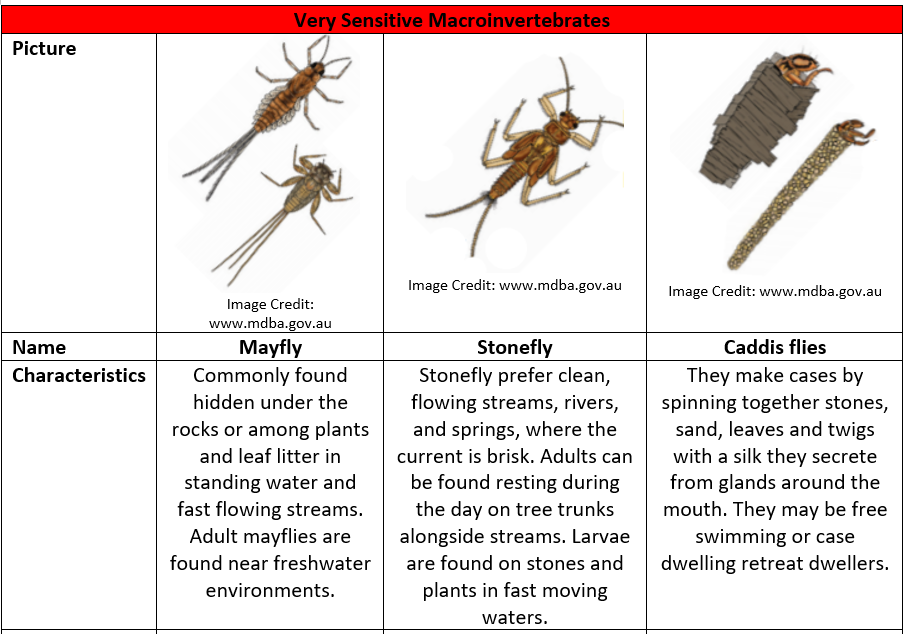
Sensitive Macroinvertebrates
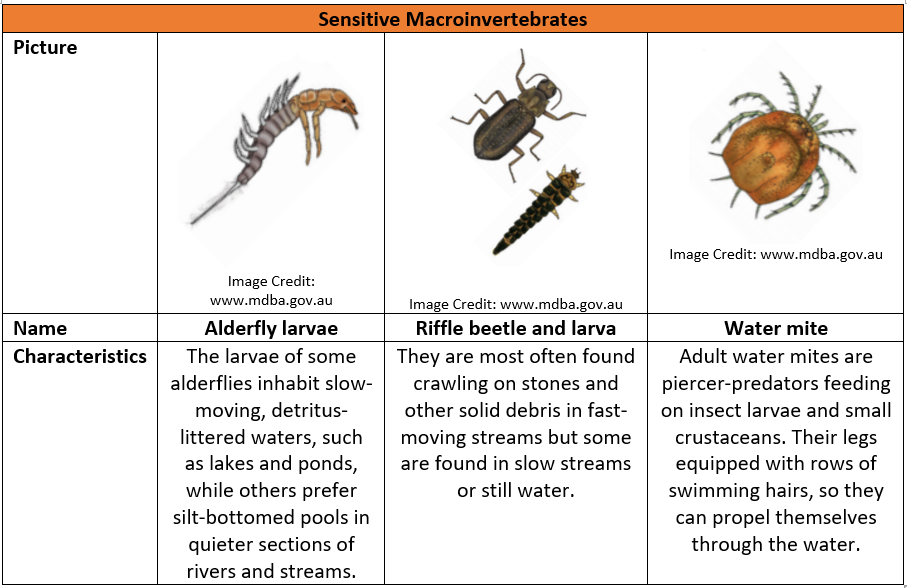

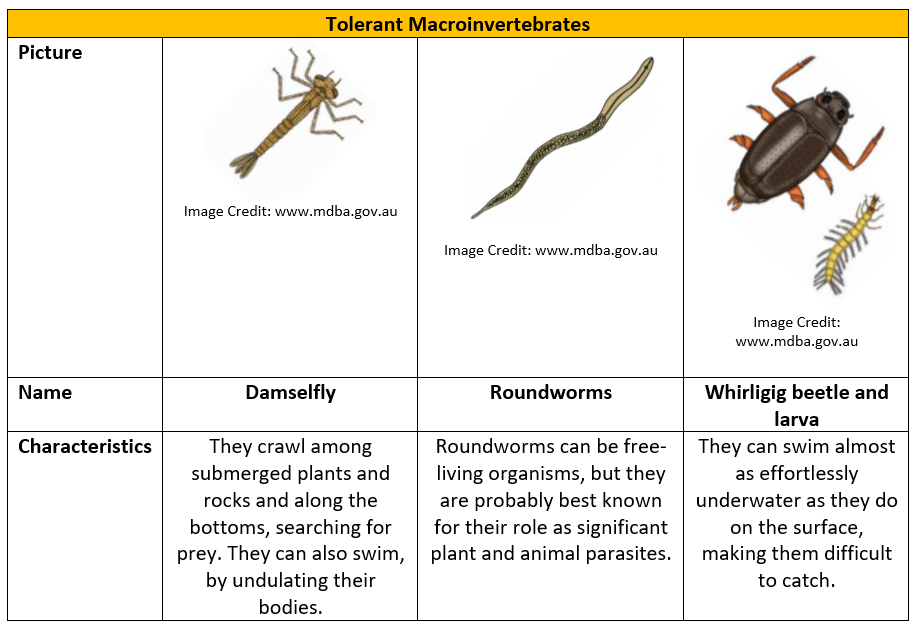
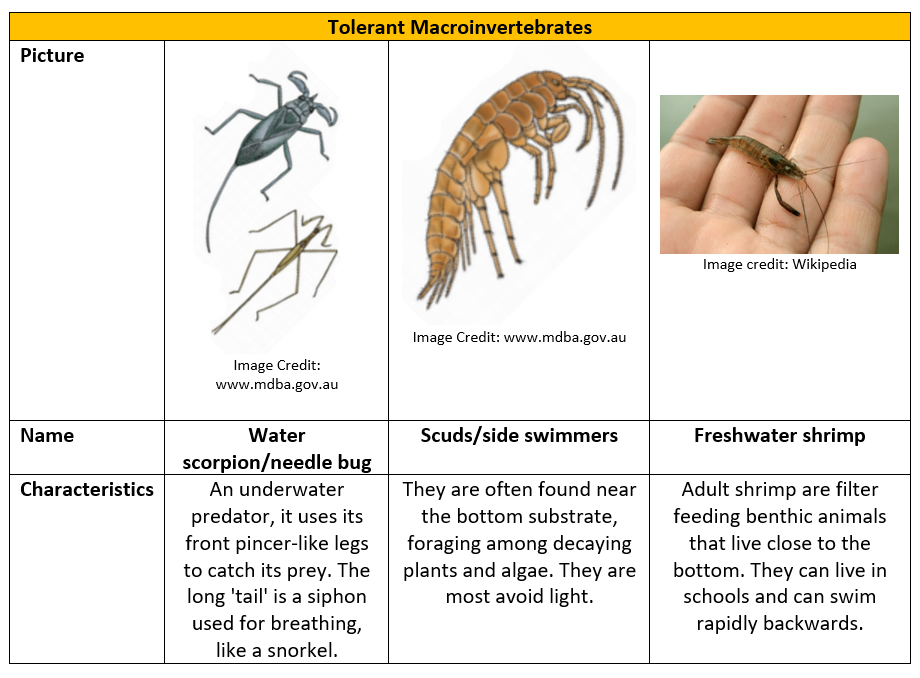
Very Tolerant Macroinvertebrates
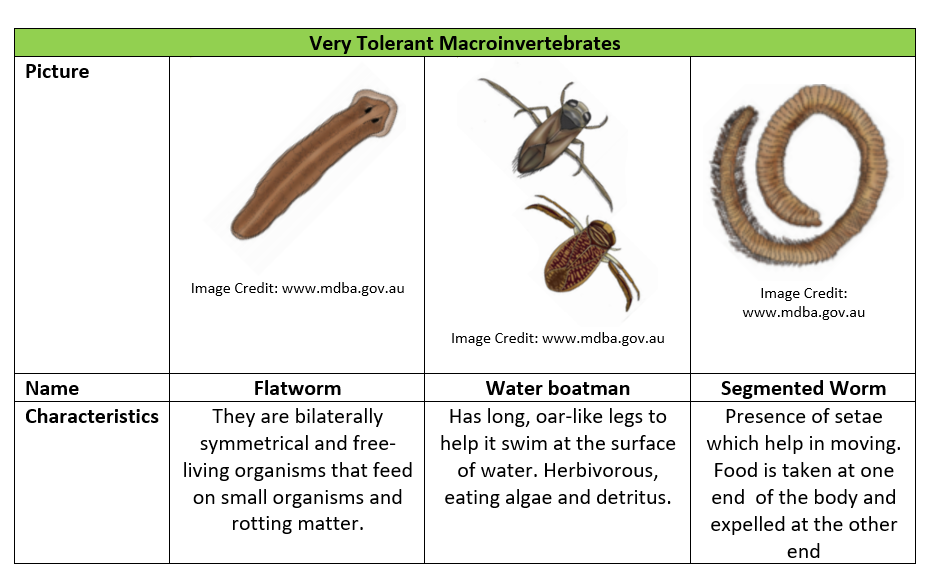
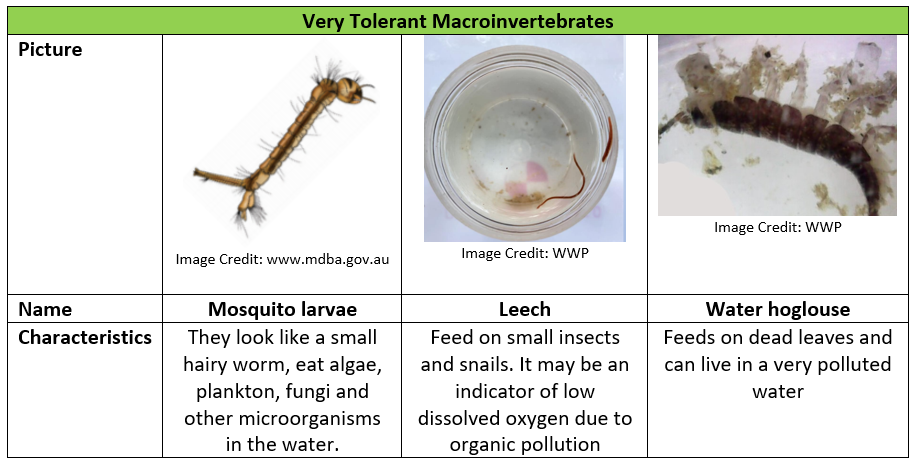
Different kinds of animal need different amounts of dissolved oxygen, so their presence or absence in a water body can indicate the levels of pollution. One way to measure is give ‘pollution’ scores to animals. For example, macroinvertebrates which need a lot of dissolved and can’t bear pollution will given a high score (10) and those that can live in highly polluted places are given a low score (1-3). In clean water, we are more likely to find many kinds of animals, but only a few in polluted water.
Way to calculate the score based on biological indicator assessment chart and determine the river class
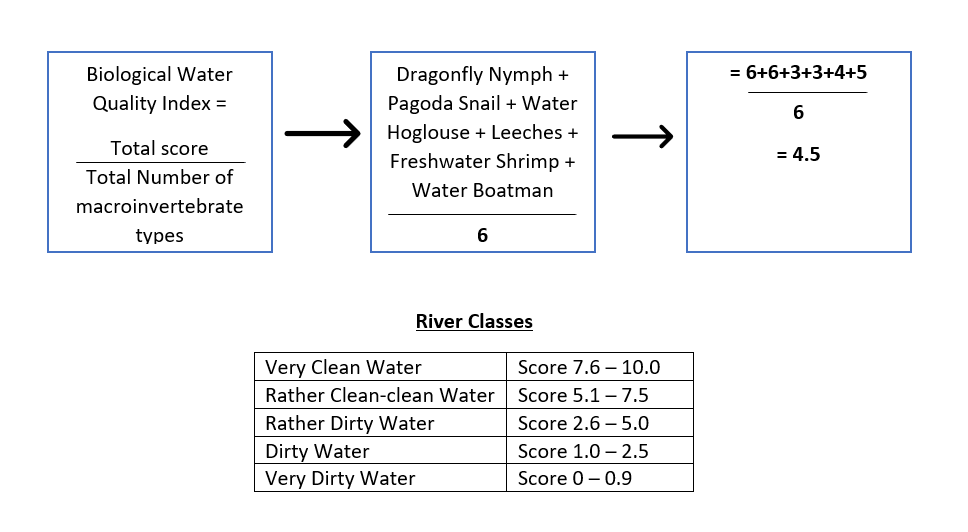
For more information regarding macroinvertebrates act as biological indicator, please contact us at info.waterwatchpenang@gmail.com
Engage with us online at:
Facebook: Water Watch Penang
Instagram: info.waterwatchpenang


